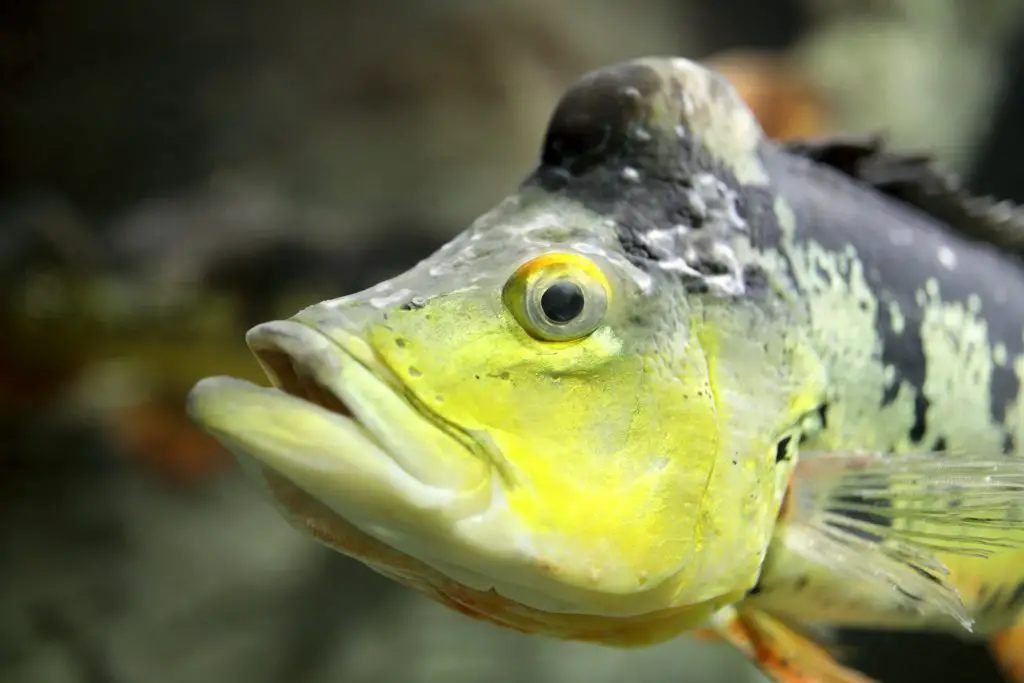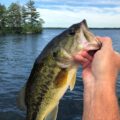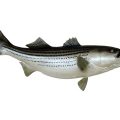Most bass will eat other bass, which would make them cannibals, if there is a lack of food. This cannibalism is more prominent when they give birth, and the parent fish eat their eggs and fry. As well, they tend to be cannibalistic when they are younger and will eat those fish, including those of the same species, who are smaller than them. However, some other fish with parental instincts do not eat their babies but rather protect them. Bass are a variety of freshwater and saltwater fish, available in many sizes and colors. Some bass are not cannibals, but some are also cannibalistic, like the largemouth bass. This depends a lot on where the bass comes from and what comprises its diet mainly.
Why are bass cannibalistic?
When it comes to bass, they all have different diets. For example, the smallmouth bass is only carnivorous, but the largemouth bass is omnivorous, although it mainly feeds on other small fish and insects. Regardless, bass are opportunistic feeders, and they will eat whatever comes their way, and sometimes it is their own species.
Regardless of the diet, most bass that you come across are cannibalistic. Not only bass but many other fish also partake in cannibalism. However, it is only observed when there is a lack of food for the fish, and they have no choice but to attack their own.
What are some of the cannibalistic bass?
There are way too many bass to list here which are cannibalistic. However, here are some cannibalistic bass and what we know so far about their behavior. Many bass have no record of cannibalism because of their habitat, environment, and other reasons.
Smallmouth bass
Smallmouth bass is very similar to largemouth bass, and its diet consists of mainly crayfish, amphibians, insects, and smaller fish, while the larvae feed on various zooplankton and insect larvae. The fish is native to the upper and middle Mississippi River basins, the Saint Lawrence River, and up into the Hudson Bay basin.
These fish are carnivorous, so they only feed on live food. When there is a food shortage, or for whatever reason, the larger fish partake in cannibalism, where they eat other small fish of the same species. However, it is noted that the cannibalistic fish attack and eat small fish from other sources.
Largemouth bass
The largemouth bass is native to North America and is known by many different names. Some of the names are brown bass, bigmouth bass, black bass, Potter’s fish, Florida bass, Florida largemouth, green bass, green trout, Oswego bass, southern largemouth, and northern largemouth.
This juvenile fish eats mostly small baitfish, scuds, small shrimp, and insects, but it starts showing cannibalistic tendencies from age one. During this phase, the bass can eat the same species of fish that is smaller in size or similar in size to their own. Interestingly, as the fish grows, the cannibalistic tendencies go away. After maturity, the fish feeds on anything that it can find, like gizzard shad, minnows, and bluegills, along with snakes, mice, young waterfowl, birds, and shrimp.
Sea bass fish
These fish are found in the western Atlantic between Florida and Cape Cod and are much smaller than the other bass. “Sea bass” is usually an umbrella term as many other species of sea bass exist.
Just like other bass, they do partake in cannibalism. This is most common when there are many different sizes of sea bass in one place, as the bigger fish is known to eat the smaller ones. The fish usually only attacked its siblings if they were half its length. Moreover, if the sea bass has food in the morning, it does not participate in cannibalistic activities, as much, as the fish is already full.

Peacock bass
Peacock bass are native to South America and are cichlids. These are not the typical bass, yet they are still considered to be fancy bass. Peacock bass is considered carnivorous as they feed on other fish, namely tilapia, crayfish, tadpoles, mosquitofish, minnows, and guppies. Many people use them to reduce the number of invasive fish in their ponds. If the peacock bass does not find enough food, it will resort to eating its own, much smaller fish. It can be prevented by ensuring they have plenty of food, so they don’t have to resort to cannibalism.
What is the effect of cannibalism on bass?
Due to the fact that many bass fish are cannibalistic, it affects their population greatly. This is why some bass, like sea bass numbers are low.
The main effect of cannibalism is that the young fish cannot grow to become adults because they are eaten. When fish eat their own, they usually attack the smaller and younger fish that are easier to consume. This results in most juvenile fish being eaten and not reaching maturity. Moreover, the fish also eat their fry and eggs sometimes, and the number of surviving fry goes down significantly.
For this reason, commercial and recreational fishermen need to work to ensure that bass are well taken care of and do not need to be resort to cannibalism. Sometimes, larger fish are also separated from smaller ones so that cannibalism does not take place.
Conclusion
Most bass do eat their own, but they all have varying behaviors when it comes to eating their own. Some do it because they have no food, some stop after they mature, and some do it just because they can.
Regardless, bass are very interesting, with unique characteristics that make them fun to observe and catch. Now you know about cannibalism in the bass fish family, and why the resort to this type of behavior.











